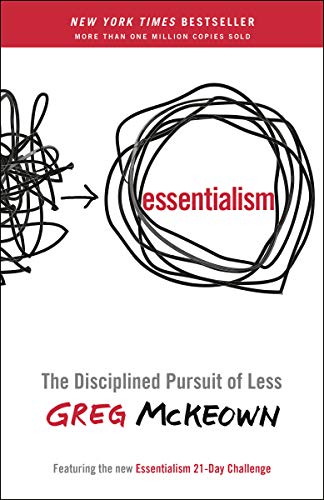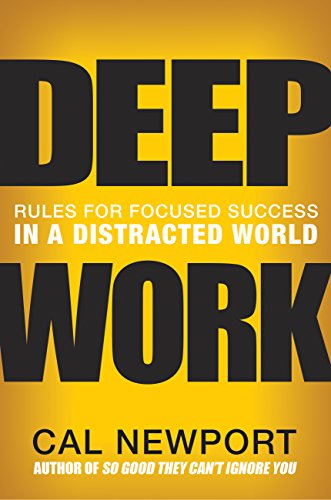Blog Short #89: The Right Way to Show Empathy

Photo by Suriyawut Suriya, Courtesy of Shutterstock
I recently overheard a conversation between two women. One was describing an emotionally painful incident to the other. The woman listening replied, “You poor thing,” while frowning and down-turning her mouth (making a sad face). The woman telling her story became quiet, and there was an awkward pause. I kept moving at this point because I didn’t want to intrude, but it got me thinking.
Although the woman listening had good intentions, her response wasn’t really empathetic. It was an expression of pity and left the other woman feeling awkward and I’m guessing uncomfortable. She may have wished she hadn’t brought up the subject.
Feeling sorry for someone can make them feel worse.
There’s a one-up feeling of superiority when someone extends pity. “I feel sorry for you” creates distance between the person in pain and the person expressing pity. Here’s how Brené Brown describes it:
“There’s nothing worse than feeling pitied, and we have the research to show us why it feels so isolating. Pity involves four elements: a belief that the suffering person is inferior; a passive, self-focused reaction that does not include providing help; a desire to maintain emotional distance; and avoidance of sharing in the other person’s suffering,” (Brown, p. 120).
Empathy is the opposite of pity. With empathy, you:
- Share someone’s pain.
- Seek to understand their perspective.
- Do what you can to help.
Sympathy is the third emotion in the trio, and like pity, it also has a distancing effect.
“I’m sorry you’re feeling that way, but I’m glad it’s not me.”
In both the cases of pity and sympathy, there’s no attempt to help alleviate or share the suffering. Those are essential aspects that differentiate empathy from pity and sympathy.
I’m certainly not criticizing anyone for trying to be sympathetic. We often don’t know what to do or say when someone’s in pain.
Today I’m going to give you some pointers on how to handle situations like this in a way that’s comfortable for you and helps the other person simultaneously.
Being Empathetic
There are four components to being empathetic. Let’s go through each, but before we start, keep in mind that empathy doesn’t involve fixing. You don’t need to fix the problem or fix the person. You may be asked for advice or help, and I’ll tell you how to know if and when you should offer that.
1. Understanding the Speaker’s Perspective.
This is what Brené Brown calls the cognitive component of empathy. It involves listening with an open mind and asking questions so that you understand how the speaker sees her situation. What’s her vision of what’s happening?
Your goal here is to understand more objectively what’s going on and why she’s upset or in pain.
Use questions to clarify, but don’t regale her with too many questions. It’s not an interrogation. Only ask what’s necessary to get the whole picture and help her unfold her story.
Listen with singular interest. Turn your body toward her, make eye contact, and keep still.
Empathy is attentiveness as much as it is understanding.
2. Willingness to Share Their Feelings
When you’re upset and tell someone how you feel, you want them to get it.
Being empathetic means being willing to share someone’s emotions.
You do this by drawing from your own history to understand what that person’s feeling. For example, you may not have had the exact same experience as the person talking, but you’ve had experiences that left you feeling the same or similar. Tap into that and feel along with them.
Listening with compassion means sharing someone’s suffering with them as they unfold it, so they don’t feel alone. By feeling along with them, you’re saying, “I can stand your pain.”
If you can stand their pain, they can stand it. That kind of support is immeasurable.
That’s a lot different than sympathy or pity, both of which are feeling sorry for someone but not feeling their pain. Empathy is connecting on a shared emotional level.
In a nutshell:
Be present, don’t feel like you need to fix something, and listen and feel what the other person is sharing with you.
The second part of sharing emotions is being able to communicate about them. When someone tells you what they’re feeling, say something back that lets them know you get it. “I can see how hard that was for you.” Or maybe you just say, “I get it!” It doesn’t have to be elaborate. Just let them know you see it and feel it through their lens.
3. Acceptance and Lack of Judgment
Empathy has no judgment. You accept how someone feels, and you validate it. It’s not about what’s right or wrong but about honoring someone else’s right to feel without restriction.
Have you had the experience of telling someone how you’re feeling about a situation, and they say something like, “You shouldn’t feel that way! It’s not good for you!”?
Doesn’t feel good, does it? Nope.
Being empathetic is listening, hearing, validating, and sharing.
You aren’t necessarily validating their view of the situation but validating how they feel about it.
Listening without judgment is powerful and often paves the way for someone to resolve some of those emotions or look at the situation differently as they work it out.
The worst thing you can do is launch a rebuttal about how the speaker “should” feel or why they should feel differently.
4. A Willingness to Help
Empathy includes a desire to help. Sometimes help is simply listening until the speaker experiences a shift in her emotions and feels soothed.
Other times, someone may ask you for something specific, such as advice or help to solve a problem.
If something more than listening is needed, don’t offer that until asked. It’s not empathetic to jump in and try to fix something.
I’m sure you’ve had that experience – you’re explaining how your feel about something, and the listener dives in with all kinds of advice about what you should do. You hear, “I don’t want to deal with your feelings,” or “I’m very uncomfortable with this.” It’s very off-putting and feels like a rejection. It might also make you angry.
Conversely, getting too caught up in the other person’s feelings is also not helpful. Empathy isn’t about immersing yourself in another person’s emotions. It’s about experiencing them from a place of mindfulness.
You feel them, but they pass through you. You contain the feelings for a while, so the other person gets some emotional space and then lets them go.
The Paradox
Being empathetic is a bit of a paradox.
- You feel along with the other person but don’t get swept away.
- You listen with acute attentiveness but still maintain objectivity so you can understand the other person’s vision of a situation.
- You help without feeling that you need to fix anything.
- You’re all the way in, yet not.
In doing all those, you serve as solid support for someone to feel and think their way through something. They have a partner, yet don’t expect you to make it all okay. They get compassion, understanding, and soothing. When done right, it’s exceptionally helpful!
That’s all for today.
Have a great week!
All my best,
Barbara
FOOTNOTES
Brown, Brené. Atlas of the Heart. Random House Publishing Group.
Florian, V., Mikulincer, M., and Hirschberger, G. (1999). The Anatomy of a problematic emotion—The conceptualization and measurement of the experience of pity. Imagination, Cognition and Personality, 19(1), 3–25. https://doi.org/10.2190/4JG9-M79P-HJYK-AQNE
Goleman, D. (2006). Emotional intelligence: Why it can matter more than IQ. Bantam Books.
Kisling, J. (2018, November 6). The difference between empathy and sympathy. Psychiatric Medical Care. https://www.psychmc.com/articles/empathy-vs-sympathy
Neff, K. D. (2003). Self-compassion: An alternative conceptualization of a healthy attitude toward oneself. Self and Identity, 2(2), 85–101. https://doi.org/10.1080/15298860309032
Neff, K. D. (2011). Self-compassion: The proven power of being kind to yourself. HarperCollins Publishers.
Wiseman, T. (1996). A concept analysis of empathy. Journal of Advanced Nursing, 23(6), 1162-67. doi: 10.1046/j.1365-2648.1996.12213.x.



 Atomic Habits is one of the most valuable books I’ve ever read, and I return to it often to remind myself of the steps that lead to creating and instilling new habits permanently. Clear begins with three ideas that run throughout the book:
Atomic Habits is one of the most valuable books I’ve ever read, and I return to it often to remind myself of the steps that lead to creating and instilling new habits permanently. Clear begins with three ideas that run throughout the book: I’m great at starting but not so great at finishing. If that rings a bell for you, you’ll love this book!
I’m great at starting but not so great at finishing. If that rings a bell for you, you’ll love this book! There are some books everyone should read, and this one falls into that category. Greg McKeown presents a complete system and methodology for cleaning out life’s input and narrowing your focus down to what’s essential. He’s the Marie Kondo for decluttering your emotional home.
There are some books everyone should read, and this one falls into that category. Greg McKeown presents a complete system and methodology for cleaning out life’s input and narrowing your focus down to what’s essential. He’s the Marie Kondo for decluttering your emotional home. Deep Work is the book to read if you have work that requires intensive brain power and concentration. Newport starts by making a distinction between “deep work” and “shallow work.”
Deep Work is the book to read if you have work that requires intensive brain power and concentration. Newport starts by making a distinction between “deep work” and “shallow work.” These last two books on my list deal with resistance. The War of Art is one of those must-read books on the list for anyone who is or has tried to pursue a goal requiring sustained, engaged, creative effort.
These last two books on my list deal with resistance. The War of Art is one of those must-read books on the list for anyone who is or has tried to pursue a goal requiring sustained, engaged, creative effort. Grit’s been on the New York Times bestseller list forever, and that’s because it’s a textbook for finding and growing passion for work through perseverance and commitment. Duckworth makes an important distinction between talent and grit and focuses on grit as the most necessary ingredient for success in any endeavor.
Grit’s been on the New York Times bestseller list forever, and that’s because it’s a textbook for finding and growing passion for work through perseverance and commitment. Duckworth makes an important distinction between talent and grit and focuses on grit as the most necessary ingredient for success in any endeavor.




